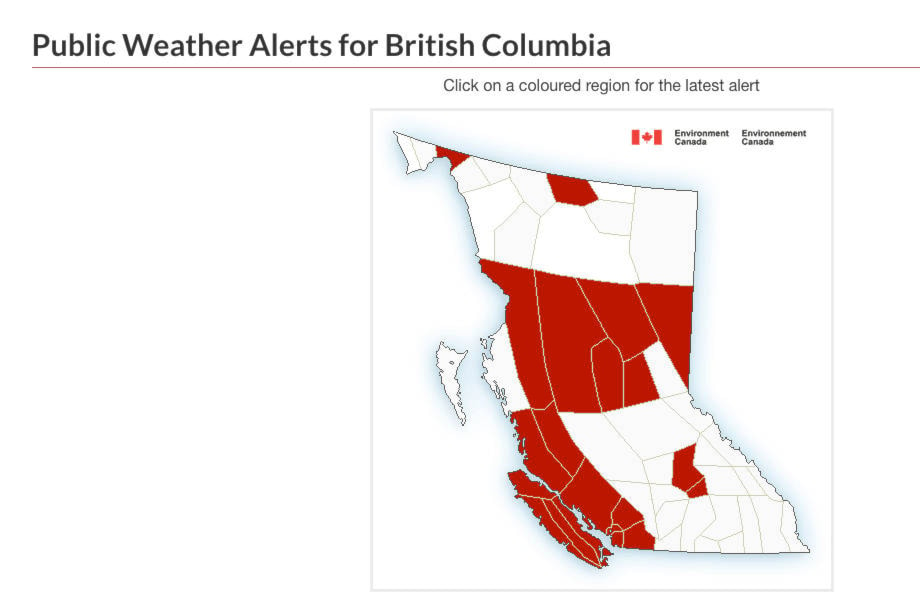As a cold front begins to descend on the Cariboo-Chilcotin WorkSafeBC is reminding employers and workers to stay safe when working outdoors.
“Working in cold conditions can lead to serious injuries if you’re unprepared — frostbite can occur in a matter of minutes without proper clothing and equipment,” noted Barry Nakahara, Senior Manager, Prevention Field Services for WorkSafeBC in a press release issued Friday.
Between 2015 and 2018, 30 workers in B.C. were injured as a result of cold exposure.
The most common cold-weather injury is frostbite, which can occur quickly in extreme temperatures, especially when wind or wet clothing are factors.
Cold stress can also lead to hypothermia, where a worker becomes so cold they lose more heat than their body produces. Hypothermia can be fatal.
Read more: National weather forecasters predict average fall, cold winter
Environment Canada in its forecast for the Cariboo-Chilcotin notes temperatures will dip down to -6C on Friday, -23C on Saturday, -30C on Sunday and -34C on Monday through Wednesday.
Periods of snow are predicted for Friday and Saturday and then through the colder days it will be sunny.
There are snowfall warnings for many other portions of the province, including Prince George, the North Thompson and Shuswap areas.
For Friday morning DriveBC is reporting compact snow with slippery sections on Highway 20 from Tatla Lake to 44 km west of Williams Lake and blowing snow between Bald Mountain and 47 km west of Williams Lake.
Highway 97 has compact snow, slippery sections, or blowing snow between Cache Creek to north of Wildwood.
There is also blowing snow between the Horsefly-Likely Road, Horsefly Road and Quesnel Forks Rd. for 78.4 km. along with compact snow and slippery sections.
WorkSafeBC states the number of industries and occupations can involve substantial outdoor cold-weather exposure, including transport truck drivers, recreational instructors, operators and attendants, construction workers, and utility and maintenance workers.
For work in cold weather, employers need to do a cold-stress assessment and implement a plan to protect workers from cold exposure.
WorkSafeBC provides the following safety tips for working in cold weather:
· Wear warm head covering. Most body heat is lost through the head.
· Layer clothing to allow sweat to escape and trap heat.
· Protect hands and feet. Wear waterproof boots and always wear gloves or mittens.
· Pace any vigorous work with scheduled breaks away from the cold. Fatigue is a risk factor in the cold.
· Stay hydrated. Limit the amount of coffee or tea and avoid alcohol.
· When possible, heat the working environment. For example, heated shelters help protect construction workers from cold and damp environments.
Read more: Editorial: Cold weather increases numbers at Cariboo Friendship Centre shelter
With files from WorkSafeBC
news@wltribune.com
Like us on Facebook and follow us on Twitter
